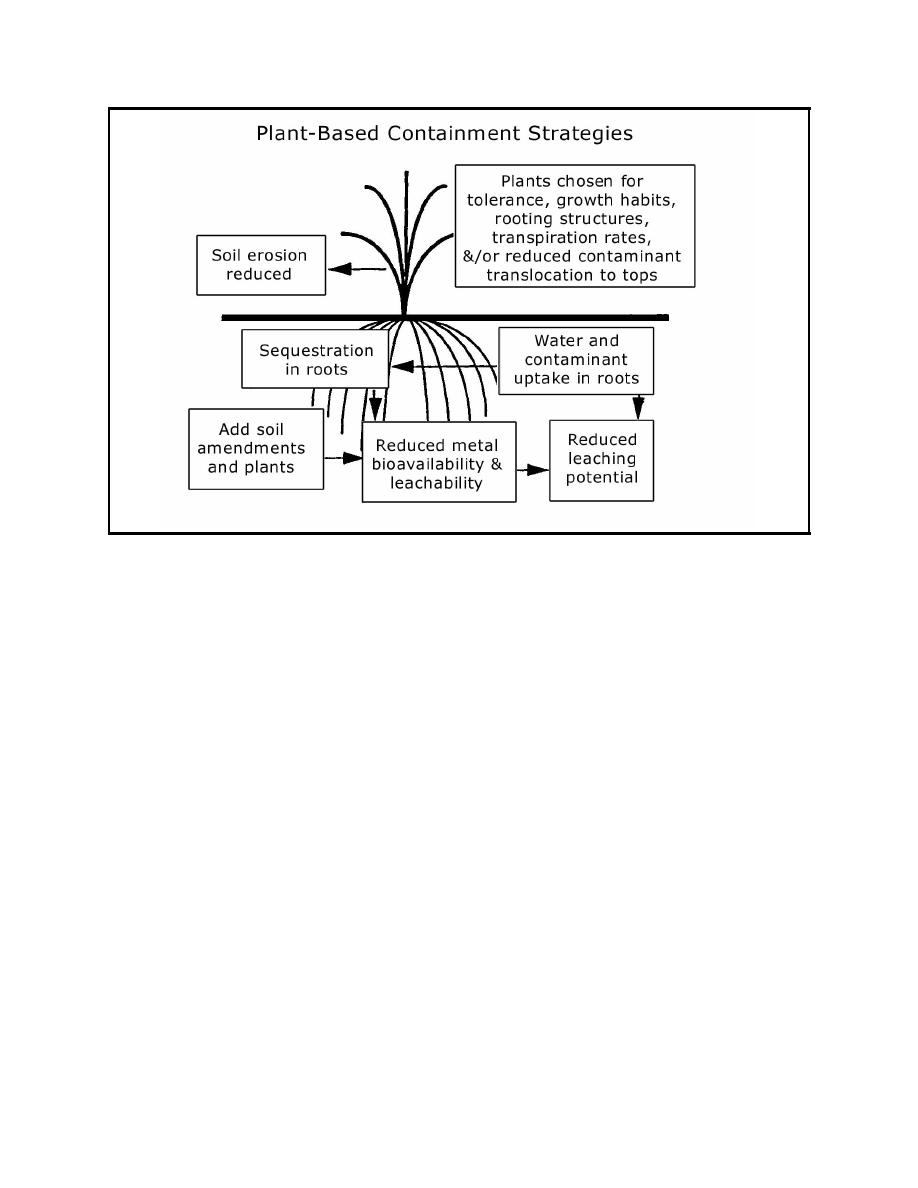 |
||
|
|
||
|
Page Title:
Figure 3. Plant-based containment and stabilitzation processes |
||
| |||||||||||||||
|
|
 Technical Note DOER-C3
May 1999
Figure 3. Plant-based containment and stabilitzation processes
For example, the U.S. Army Environmental Center (USAEC) estimated the cost for phytoreclama-
tion of 1 acre of lead-contaminated soil to a depth of 50 cm to be $60,000 to $100,000 compared
with excavation and landfilling at a cost of $400,000 to $1,700,000 (USAEC 1997). Also,
phytoreclamation has high economic potential for commercial entities that can successfully
demonstrate its effectiveness. The CE can benefit from these successes by developing and
demonstrating these new and innovative technologies for managing dredged material.
Most industrial cleanup efforts deal with one contaminant or one class of contaminants at a time.
This is not the case with most dredged material. Heavy metals, petroleum hydrocarbons, poly-
chlorinated biphenyls, organotins, dioxins, and other contaminants may be present in dredged
material. Drastic physicochemical changes may also occur as a dredged material is removed from
an anaerobic, aquatic condition and placed in an aerobic, terrestrial environment. This is especially
true when the transition is from an aquatic saltwater to an upland freshwater site. All of these
conditions must be addressed when considering phytoreclamation as an alternative for cleanup/
stabilization of dredged material contaminants.
Evaluating the potential success of phytoreclamation of dredged material will include three basic
assessments including sediment physical and chemical characteristics, plant exposure effects, and
contaminant reduction effectiveness. Additionally, site management issues and goals must be
considered prior to selection and implementation of a phytoreclamation process. The advantages
and disadvantages of various phytoreclamation approaches, as shown for metals in Table 1, may
require specific management considerations to implement the process. For example, phytoextraction
may increase the bioavailability of some metals to animals such as earthworms that reside in the
3
|
|
Privacy Statement - Press Release - Copyright Information. - Contact Us - Support Integrated Publishing |